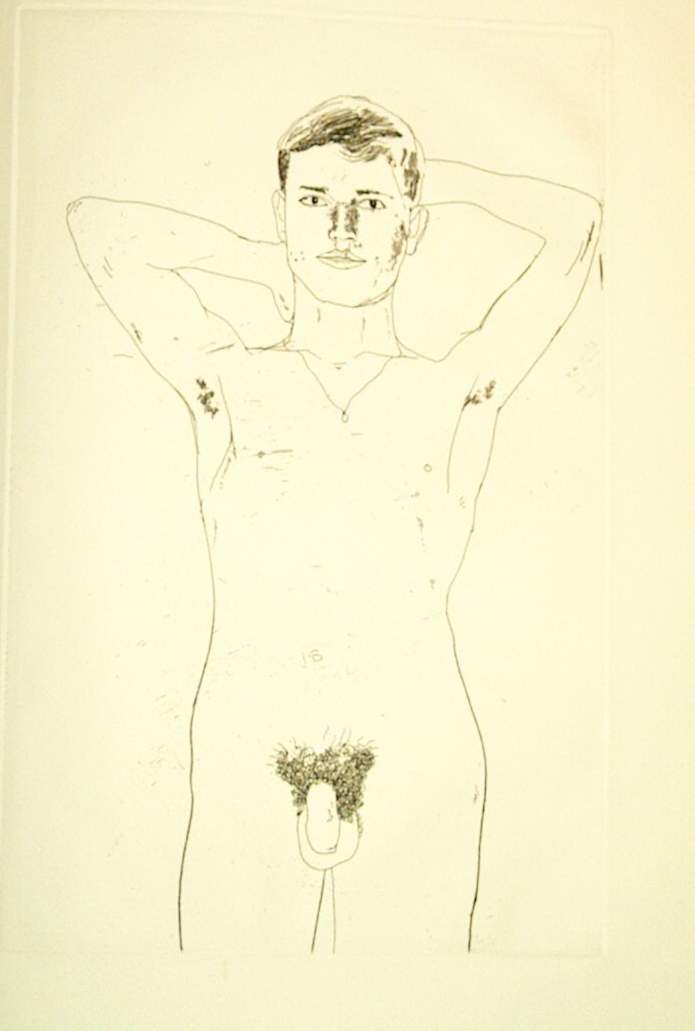(Hockney, David) illus. FOURTEEN POEMS BY C.P. CAVAFY. S.47-59. Editions Electo, London, 1966. Folio (19 x 13 /14 inches, 484 x 385 mm.), cloth, slipcase, text and twelve etchings. One of 50 Artist's Proofs from "Edition A," signed and inscribed "Artist's Proof" on the justification page. The publisher's prospectus laid-in. The called-for laid-in plate lacking, else in Fine condition throughout. The total edition comprised Edition A, 250 copies, numbered 1-250 plus 50 Artist's Proofs, all signed, with a signed etching laid in, Edition B, 250 copies, like Edition A, but without the laid-in etching, numbered 251-500, Edition C, 50 sets of the etchings loose in portfolio numbered 1-50 of 75, each etching signed, Edition D, 25 sets, plus 15 Artist's Proofs, like Edition C, but with the text included, numbered 51 to 75 of 75, Edition E, 25 sets, plus 5 artist's proofs, comprising text, 12 unsigned etchings, and one signed etching, loose in portfolio, numbered I to XXV. Each etching in each edition is stamped on its reverse with the edition of which it is a part. The total size of the edition, including the Artist's Proofs, is, therefore, 670. Our copy, lacking the signed plate, is, per the foregoing, the equivalent of a copy from Edition B. David Hockney first discovered the Greek poet C.P.Cavafy while a student at the Royal Colege of Art in the early nineteen sixties. In 1961 he produced two etchings (Kaisarion with all his Beauty; Mirror, Mirror on the Wall) and a painting (A Grand Procession of Dignitaries in the Semi-Egyptian Style ) inspired by Cavafy's poems. So when Paul Cornwall-Jones of Editions Alecto asked him to make a series of etchings relating to Cavafy in 1966 he agreed without hesitation. The poems Hockney chose all related to Alexandria in Egypt with its barely concealed flavour of homosexual love, but Alexandria had become too spoilt since the poems were written in the nineteen twenties and so he travelled to Beirut for two weeks in order to make careful pen and ink drawings of the daily life of the city. On his return he created the etchings which vividly demonstrated his new fascination with observed reality after the more abstract imagery of his
Follow us
Contact Us
ed@edpollackfinearts.com
Copyright © 2025 - Edward T. Pollack Fine Arts





